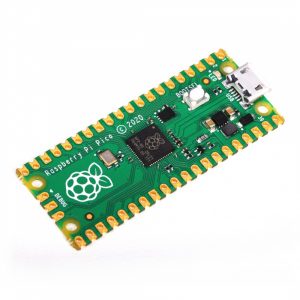Table of Contents:
Raspberry Pi boards are a great product for learning electronics and programming, as well as an excellent basis for creating your own projects and devices. Find out how to start your Raspberry Pi adventure and what you can do using these amazing devices.
Choose your Raspberry Pi model
There are many versions of the Raspberry Pi board available on the market, which differ in the communication methods available, computing capabilities, performance or the number and type of connectors. In principle, any model of Raspberry Pi is suitable for novice users – when choosing a particular product, it’s just worth paying attention to its unique features, which may be more or less desirable in a particular case.
CHECK AT STORE
CHECK AT STORE
CHECK AT STORE
For example, some Raspberry Pi models come with a WiFi communication module at the start, while others require an add-on if the owner wants to use such a feature. For those who want to learn how to use the board, simple versions such as the Raspberry Pi A, B or Zero will suffice. However, for users who want to start with more ambitious projects, Raspberry Pi Zero W, 3B+ or 4B, for example, can be recommended.
Raspberry Pi – how to start?
The Raspberry Pi does not have a hard drive or user interface, so to get started with the board you will need storage media (such as a microSD card) with or without an operating system uploaded, a keyboard for input, a pointing device (mouse) and a screen to display information on. In addition, a suitable power supply is required, matched to your Raspberry Pi in terms of connector standard and current and voltage parameters.
It is also possible to program your Raspberry Pi in headless mode without peripherals (either wired or wirelessly via an external computer), but beginners will find the option using dedicated accessories easier.
Choosing the right accessories
Keyboards, mice, monitors and cables
The Raspberry Pi should work seamlessly with most USB-connected keyboards and mice and HDMI monitors, but the safest solution is always to choose dedicated accessories (those whose manufacturer claims compatibility with the Raspberry Pi). This also applies to the cables used.
Storage media
The microSD or SD memory card or USB flash drive that will hold the NOOBS software for installing the Raspbian operating system must be at least 8GB. You can either buy ready-made memory media with NOOBS installed, or upload it yourself after formatting the microSD card (for example, with SD Card Formatter).
Power supply
Power supplies for Raspberry Pi boards vary from model to model, so in most cases it is best to choose a dedicated charger or a product with the same specifications. Most versions of Raspberry Pi will work with a micro USB or USB C connector power supply providing 5.1V and up to 2.5A of current.
First start-up and configuration
Before starting the board for the first time, connect the cables from the keyboard and monitor to the appropriate ports, and place the media with the operating system loaded in the right slot. Then you can connect the device to the power supply. When a window appears on the screen allowing to choose the system, click on “Raspbian Full Desktop Version” and confirm the choice by pressing “Install” button.
Once the operating system is installed, the device will reboot and open the ‘Welcome to Raspberry Pi’ application, allowing you to set the time zone, connect to a network or set a password, and update to the latest version of Raspbian if updates are available (and the device has internet access).
The Raspberry Pi will then reboot, after which it will be ready to go – installing applications, programming, connecting new devices or surfing the internet.
Add Your Heading Text Here
Using the Raspberry Pi is similar to using other Linux-based operating systems: using the ‘Terminal’ application, you can issue text commands and control processes on the device. The device also has a basic graphical interface, and a menu with basic options and programs is available by clicking the button representing a raspberry (top left corner of the desktop).
Applications for the Raspberry Pi can be downloaded from the web or written in-house. The device works with a variety of programming environments and languages – including graphical (Scratch) and text-based coding methods (Python, C, C++, Java, PHP etc). The primary, most popular programming language among Raspberry Pi users is Python.
Raspberry Pi: what can you do?
Almost everything! Raspberry Pi boards are very versatile devices which, when connected with the right accessories and extensions, can work as personal computers, but also as logic elements in robots, audio and video devices, gaming equipment, automation systems and many other electronic projects.
We have already described a few interesting projects on the Botland blog and we will certainly write about many more in the future. After all, to want is to be able and your imagination knows no limits. We encourage you to follow our blog and certainly you will not miss anything interesting!
How useful was this post?
Click on a star to rate it!
Average rating 0 / 5. Vote count: 0
No votes so far! Be the first to rate this post.























